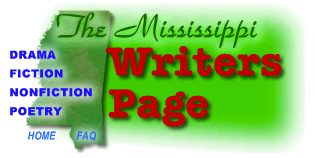
Books by Mississippi Writers 1996-2010
Title
Preview

Creation Date
9-1-2001
Description
By Mildred D. Taylor Phyllis Fogelman Books (Library Binding, $17.99, ISBN: 0803719507, 9/2001) *Starred Review* Gr. 7-12. Like Taylor's Newbery Medal book, Roll of Thunder, Hear My Cry (1976), this powerful historical novel, a prequel to Roll of Thunder, refuses to "whitewash" history. As the author notes in her afterword, the language was painful and life was painful for many African Americans, including her family. Drawing directly on her family history, especially what she knows about her great-grandfather, she goes back to the time of Reconstruction to tell a searing story of cruelty, racism, and betrayal. She also tells a thrilling coming-of-age story about friendship, hope, and family strength. Paul-Edward narrates it in his own voice, which combines a passionate immediacy with the distance of an adult looking back. There are things he can never forget. The story begins when he is nine years old in Georgia. Born of a part-Indian, part-African slave mother and a white plantation owner, he is raised by both parents. Paul is treated "almost" as if he were white. He eats at his white father's table―except when there are guests. He learns to read, and his best friend is his white brother, Robert, who is the same age. His greatest enemy is Mitchell, the son of black sharecroppers on the plantation, who beats Paul unmercifully ("You think you way better 'n everybody else"). Then Paul teaches Mitchell to read, and Mitchell teaches Paul to fight. Through Paul's personal turmoil, Taylor dramatizes society's rigid racist divisions. Paul's identity as a "white nigger," caught between black and white, almost destroys him. A bitter turning point comes when Robert betrays him to save face with white friends. Taylor makes it plain that Paul never gets over it. Never. Paul learns another harsh lesson when he loses his temper and beats up a white bully: his father thrashes him to teach him an essential lesson for his survival: "You don't ever hit a white man.... Use your head, Paul-Edward, not your fists." Losing his temper could get him lynched, and he doesn't forget, even when whites exploit him, insult him, cheat him, and injure him. His dream is to own his own land. It becomes his obsession. The second part of the book is about his work, backbreaking work for months and years to get that land. As a teenager, he finally runs away, and Mitchell runs with him. They meet up later, brothers now, family, "[Mitchell is] more a brother to me than any of my blood." The bond between Paul and Mitchell is at the heart of the book, all the more moving because it begins with raging hostility. Paul falls in love with a strong, independent woman, whom he eventually marries. But his focus is on the land, working the land, his own land. It's rare to find detail about work and business in books for children. Paul's work is vividly described: he trains and races horses, and he makes money as a skilled carpenter. Then he signs a contract with a white landowner and works seven days a week, clearing the land, chopping the trees, hacking the branches, burning the brush, planting cotton―only to have the landowner tear up the contract ("You think I care about a paper signed with a nigger?"). That moment is like a lightning flash, illuminating the racist truth through Paul's bitter heartbreak. Yet, even then, Paul remains ruthlessly determined. He continues his backbreaking labor and quest for the land, obsessively calculating how much he needs and how he'll earn it. The banks refuse Paul credit. He sells his most precious possessions. Finally, with the help of Mitchell, he earns the money and, through a complicated financial transaction that involves a sympathetic white man and a surprise family inheritance, he buys the land of his dreams. The novel will make a great discussion book in American history classes dealing with black history; pioneer life; and the Reconstruction period, about which little has been written for this age group. Filled with details of how people work the land and build a home, what they eat and how they cook it, the book will appeal to teens who loved the Little House books (a series that also spoke to racism), and it could easily be paired with any number of stories about immigrants' struggles to follow their dreams in America. Taylor's characters are drawn without sentimentality. Not all whites are demonized; some whites help Paul. But many are vicious racists, like the farmers who don't want blacks owning land nearby. The "n" word hits like a blow each time it's used. But, as the author writes, that's what her grandfather endured. Let's hope that the historical truth, the words, and the violence don't cause adult censors to keep this landmark book from young adults who will want to read it and talk about it. Paul-Edward's granddaughter will be Cassie Logan, and readers who remember her from Roll of Thunder will grab this and be astonished by its powerful story. ―Hazel Rochman Booklist. Copyright © American Library Association. All rights reserved
Relational Format
image

